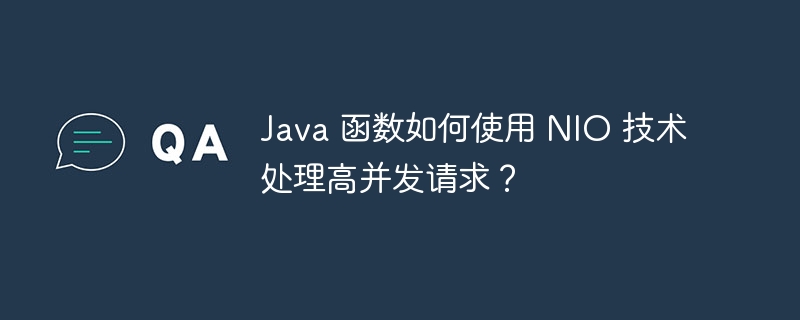Java NIO는 비차단 I/O 및 폴링 메커니즘을 사용하여 이벤트를 수신하는 NIO 선택기를 생성하고 선택기에 채널을 등록하고 이벤트를 대기하는 효율적인 기술입니다. 루프 및 프로세스 ACCEPT, READ, WRITE 이벤트는 클라이언트 연결을 처리하고 READ 이벤트는 데이터를 읽고 WRITE 이벤트는 데이터를 다시 작성합니다.

Java 함수는 NIO를 사용하여 높은 동시 요청을 처리합니다.
소개
NIO(Non-blocking I/O)는 많은 수의 동시 요청을 처리하기 위한 Java의 효율적인 기술입니다. 비동기식 작업과 폴링 메커니즘을 사용하여 시스템 리소스를 효과적으로 활용하고 시스템 처리량을 향상시킵니다.
단계
1. NIO 선택기 만들기
NIO 선택기는 등록된 채널의 이벤트를 듣는 데 사용됩니다.
1 |
|
2. 채널 등록
ServerSocketChannel을 Selector에 등록하고 ACCEPT 이벤트를 듣습니다.
1 2 3 |
|
3. 이벤트를 기다리는 루프
Selector.select() 메서드를 통해 이벤트를 수신합니다.
1 2 3 4 5 |
|
4. ACCEPT 이벤트 처리
ACCEPT 이벤트가 발생하면 연결을 수락하고 SocketChannel을 만듭니다.
1 2 3 4 5 6 |
|
실용 사례
다음은 간단한 Java NIO Echo 서버 예제입니다. 클라이언트 연결을 수신하고 수신된 메시지를 에코합니다.
EchoServer.java
1 2 3 4 5 6 7 8 9 10 11 12 13 14 15 16 17 18 19 20 21 22 23 24 25 26 27 28 29 30 31 32 33 34 35 36 37 38 39 40 41 42 43 44 45 46 47 48 49 50 51 52 53 54 55 56 57 58 59 60 61 62 63 64 65 66 67 68 69 70 71 72 73 74 75 76 77 78 79 80 81 82 83 |
|
위 내용은 Java 기능은 NIO 기술을 사용하여 높은 동시 요청을 어떻게 처리합니까?의 상세 내용입니다. 자세한 내용은 PHP 중국어 웹사이트의 기타 관련 기사를 참조하세요!